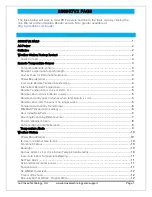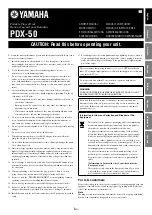
La Crosse Technology, Ltd. www.lacrossetechnology.com/support
Page 5
•
Observe to see if the temperature remains on consistently for 1 hour.
•
If the temperature remains on while in the house, then it is likely a
issue.
•
Move the remote sensor to different locations outside to find a location where the
temperature reading will hold.
Remote Temperature is stuck or HH.H, LL.L
Explanation: These symbols are error messages indicating the remote sensor is outside
of its readable range.
•
Overpowered or underpowered batteries can cause this reading.
•
Replace remote sensor.
Note: The last remote reading may remain (not change) for several hours when
connection is lost. The remote temperature reading will flash when the connection is first
lost or intermittent.
Remote sensor drains batteries quickly
•
Test a new set of alkaline batteries. Write down the date of installation and the
voltage of the batteries.
•
When the batteries fail, please note the date and voltage again.
•
resistance
between the remote sensor and weather
station. Remote sensors at the end of the range may work while batteries are fresh
but not after they drain a bit.
•
Check for leaking batteries, which may damage the remote sensor.
•
Battery life is over 24 months when using reputable battery brands for both Alkaline
and Lithium batteries.
Remote Humidity goes to dashes when temperature is cold.
•
The remote temperature/humidity sensor designed to work with this weather
station may drop the remote humidity and dew point reading in cold temperatures.
•
The humidity and dew point will return when the temperature rises. This is how the
sensor came from the factory. The temperature itself will continue to read.
Remote sensor fell. The sensor no longer works
Explanation: If there is no physical damage to the remote sensor, the fall may not have
caused internal damage. A fall can shock the remote sensor or the batteries in the remote
sensor. Batteries that have fallen on a hard surface may be damaged and unable to
function properly.
•
Complete a
•
dated at least six years in advance of the current year. Batteries dated
earlier than six years from now may still work, but may be unstable in performance.
































